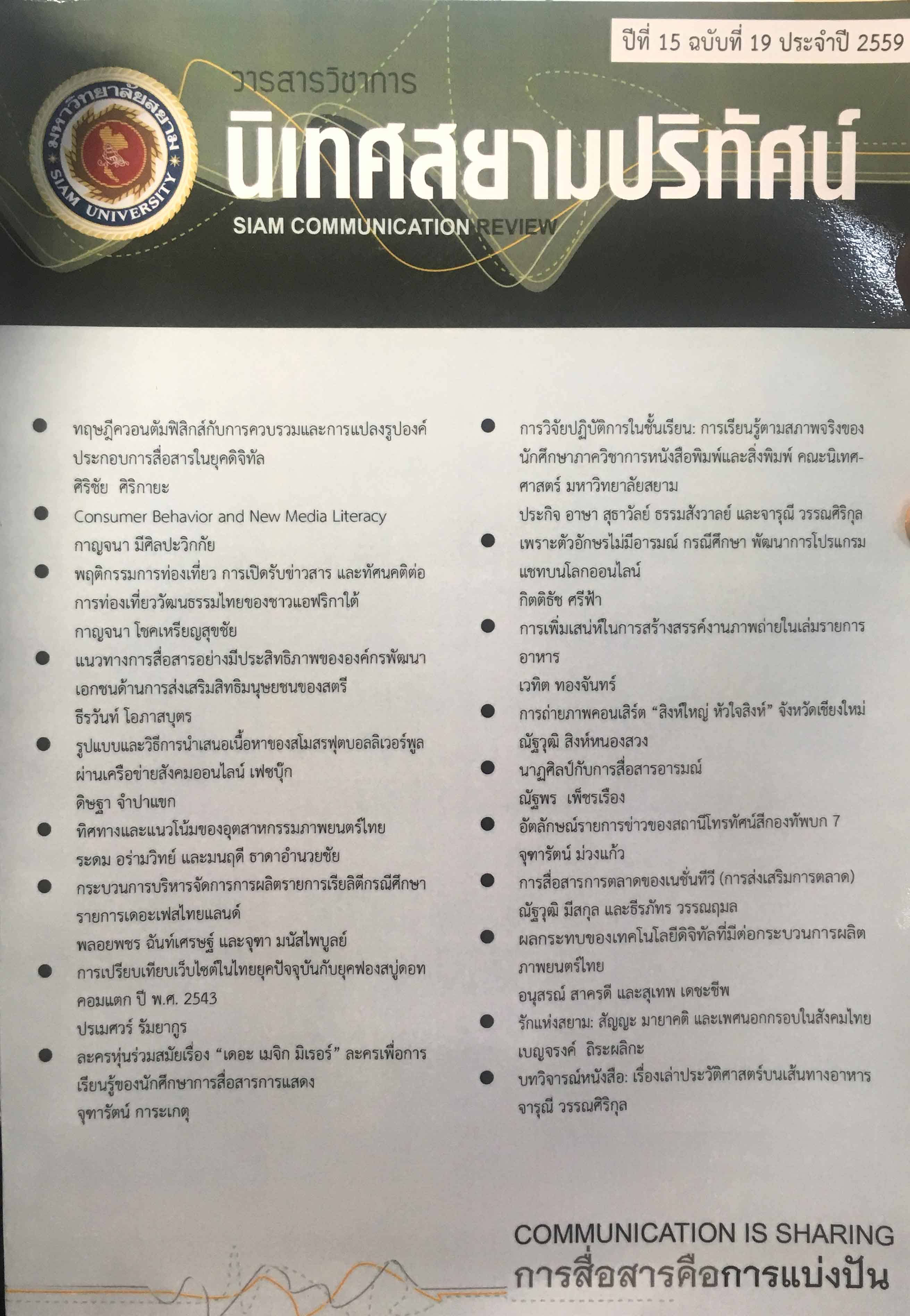Consumer Behaviors and a New Media Literacy
Main Article Content
Abstract
Consumer behavior includes mental assessments, emotional responses and physical activities during the selection, purchase, use and disposal of products and services. Existing models of the purchasing process vary, but usually share at least four significant parts: 1) Consumer 2) Marketing Inputs 3) Psychological Inputs 4) Purchase Decisions. Among the most important influences on this process are the media. In the 21st century, new media have advanced and expanded in an unprecedented way to become pervasive and penetrate every aspect of our society. A new media literacy plays an essential role for any citizen to participate fully in this society. But it is individual social skills and cultural competencies that create today’s media environment for active digital participation. In this rapidly changing situation, a positive consumer behavior leads to a purchase decision on the basis of factors including product, location, and brand choice. The decision to buy is often driven by demand that marketers have generated using new media. There is a mutual need for increased media literacy, by marketers to optimize promotion and by consumers as the receivers of marketing information. Potentially, brand ‘trust’ will make this New Media Literacy and Buyer Decision Process model simpler, but further research on the relative importance of different influences on consumer-decision making, related to culture, for some large purchases is suggested.
Article Details
References
Chen, J., Zhan, W., & Su, Y. (2015). From Relationality, Behavioral Dynamics to Dynamic Relationality: a New Perspective on Cross-cultural Negotiations. In Camillo, A.A. (Ed.), Global Enterprise Management (Volume 1): New Perspectives on Challenges and Future Developments (pp. 171-188). NY: Palgrave Macmillan.
Cohen. (1991). Buyer Decision Process. Retrieved from http://www.marketingteacher.com/ consumer-buyer-behaviour/
Elmerraji, K. (2015). Top Ways that Social Media Influences Consumer Behavior. Retrieved from http://tcapushnpull.com/social-media-2/top-ways-that-social-media-influences-consumerbehavior/
Gibler, K. M., & Nelson, S. L. (1998). Consumer Behavior Applications to Real Estate. In the American Real Estate Society Meeting (pp. 1-21). GA: Mercer University.
GilaniNia, SH. (2010). Introduction to industrial marketing. Rasht: Kadvsan.
Hofstede, G. (2000). The cultural relatively of the quality of life concept. In Weaver, G.R. (Ed.), Culture, Communication and Conflict (pp. 138-148). Boston: Pearson Publishing.
Jeddi, S., Atefi, Z., Jalali, M., Poureisa, A., & Haghi, H. (2013). Consumer behavior and consumer buying decision process. International Journal of Business and Behavioral Sciences, 3(5), 20-23.
Jenkins, H., Clinton, K., Purushatma, R., Robison, A., & Weigel, M. (2006). Confronting the Challenges of a Participatory Culture: Media Education for the 21st Century. Retrieved from http://digitallearning.macfound.org/atf/cf/%7B7E45C7E0-A3E0-4B89-AC9CE807E1B0AE4E% 7D/JENKINS_WHITE_PAPER.PDF
Kotler, P. (1999). Kotler on Marketing: How to Create, Win, and Dominate Markets. NY: Free Press.
Perner, L. (2010). Consumer Behavior: The Psychology of Marketing (Research report). CA: University of Southern California.
Perrlau, F. (copyright 2016). The 4 Factors Influencing Consumer Behavior. Retrieved from http://theconsumerfactor.com/en/4-factors-influencing-consumer-behavior/
Servaes, J. (1999). Communication for Development: One World, Multiple Cultures, Cresskill. NJ: Hampton Press.
Solomon, M., Bamossy, G.T., Askegaard, S. & Hogg, M.K. (2006). Consumer Behavior: A European Perspective (3rd ed.). Harlow: Prentice Hall.
Su, Y., Cheng, J., & Zhan, W. (2014). The Study of Relational Behavior Adaptation Process in International Business Negotiations. Asia-Pacific Economic Review, 182(1), 46-52.
Weaver, G. R. (2000). Contrasting and comparing cultures. In Weaver, G. R. (Ed.), Culture, Communication and Conflict: Readings in Intercultural Relations (pp.72-77). Boston:Pearson Publishing.


